Looking for a Halloween event in Montreal in 2024? Haunted Montreal offers ghost walks, paranormal investigations, haunted pub crawls, and more!
Welcome to the eighth installment of the Haunted Montreal Blog! Released on the 13th of every month, the December edition focuses our research we are carrying out into the old Pointe Claire Hotel.
Haunted Research
In the heart of Pointe Claire Village sits a rambling old structure which currently houses a bar known as Le Pionnier. The building was originally a bustling hotel that hosted travellers passing through the village or merchants coming to conduct trade. While the hotel has changed hands and names over the decades, one thing remains constant – the old building is rumoured to be haunted. According to several people who have worked in the old hotel, a shadowy figure is known to terrify people on the building’s creepy third floor.
Pointe Claire is a sleepy and bucolic suburb on Montreal’s West Island. The municipality gets its name from the fact that clear point of land juts out into the lake. Before colonization, this treeless point was used by various First Nations as a stopover and unobstructed place to survey conditions on the lake.
The French colonized the island in 1642, starting with the fortified settlement of Ville-Marie in what is now Old Montreal. The name Pointe Claire first appears on a map in 1686. Strategically located on the shore between Lachine and the rapids in Sainte-Anne-de-Bellevue, French settlers chose Pointe Claire as a place to test out the colonial concept of the seigneury. In a nutshell, long rectangles of land were “granted” to colonists by the King of France, developed by farmers and overseen by a feudal lord known as the seigneur.
In 1684, a colonist named Pierre Cabassier received the first grant of land under the seigneurial system in what is now the municipality of Pointe Claire.
Pointe Claire developed into a village during the New France era and was characterized by its windmill, erected in 1709 on the breezy, treeless point. A sturdy structure that both ground wheat into flour and provided a form of defense during the early wars between French colonizers and the First Nations being colonized, the windmill is still perched on the point.
The first presbytery was built nearby in 1705 and the first church in Pointe Claire was erected on the site in 1713. It was a rudimentary stone structure with a cemetery, including a section for children. Interred there is the daughter of Canada’s first female Saint, Marguerite D’Youville. Her 14 month-old daughter, Louise, was buried in the children’s cemetery on March 1st, 1729.
As the village grew, the church was replaced in 1746 with a larger version. After the British conquored New France and took over Montreal Island in 1760, more commerce began to spring up in the village, including hotels and inns. This caused tension with religious authorities. In response, plans were announced to expand the church site in 1848. Famous architect Victor Bourgeau was hired to draw up blueprints for a new church. During these planning stages, in 1857 the church’s cemetery ran out of space.
That July, Curé M. Pominvile wrote a letter of complaint to Montreal Bishop Ignace Bouget. The curé lamented that four licensed innkeepers had set up near the church. He also expressed dismay that with the cemetery full, it was necessary to bury the dead under the church: “…the floor lies on the bare earth so each time there is a burial they are obliged to remove the pews, which has caused the flooring to deteriorate in a very short time and also damages the pews.” He bemoaned that “…the large number of bodies interred in the church over the last few years has become dangerous to the public health.”
Efforts were made to improve the site with a building spree. A new convent was erected in 1868. The new Saint-Joachim Church opened on Easter Sunday in 1881 but promply burned down a few days later. A fire erupted in the attic of the old church on April 17, and the flames, fanned by strong winds, destroyed both structures. Townspeople valiantly fought to save the other buildings, and a pious young man named Daoust was burned alive while trying to protect the presbytery.
The final version of Saint-Joachim Church, still standing today, was erected in 1885.
Furthermore, a new cemetery was consecrated along the eastern and north-eastern side of the new church on land purchased from the nuns of the Notre-Dame Congregation.
1885 also saw a dispute between religious authorities and the nearby Hotel Bergevin, located just to the east of the new church. A rowdy and popular inn that had served as a stopover point for merchants crossing the river to trade, it was considered an embarassment by church officials. Parish priest Father Laberge felt that having an alcohol-fuelled hotel near the church was unacceptable. To resolve the problem, parish elders and the curé approached the owner, Dr. Roddick, and offered to buy it. In 1896 the Hotel Bergevin was sold and converted into a religious boy’s school called Académie des Frères de Saint-Joseph.
Burials continued in the new cemetery for decades until it too was full by 1946. The cemetery was decomissioned and from 1948-1954 all visible remains were removed, including tombstones, crosses, fences, and pathways. Around 50 skeletons were dug up and moved to a new cemetery on Saint John’s Boulevard, leaving the graves of approximately 5000 of Pointe Claire’s ancestors unmarked. Today, there is nothing whatsoever to commemorate the presence of this historic burial ground.
Just up the street from Saint-Joachim Church is Le Pionnier, the site of the haunting. Located on Lot 64, the rambling building was constructed as a hotel in 1900 following a fire that destroyed half of Pointe Claire Village. Previously, the site was used for innkeeping and housed another hotel, thought to have been built in the 1880s. The Pointe Claire Hotel changed hands many times over the years and was often renamed after the proprietor, such as Charlebois, Rickner or Chénier.
The hotel business dried up in the 1960s and the enterprise began to develop a worrisome reputation as more and more people drank alcohol there. The place had become rundown and shabby and began catering to a more and more shady clientele. In order to accommodate a serious drinking establishment, in the 1970s the hotel closed and the building was renovated. The first floor became a bar and restaurant exclusively, while the second floor was converted into a mezzanine with a bar and pool tables. Only the third floor was left untouched. The legendary Pioneer opened its doors and was soon known as a criminal hangout frequented by motorcycle gangs. In January of 1995, the business was cleaned up and renamed Clyde’s. Most recently, in 2011, it was placed under new management and renamed Le Pionnier.
During the late 1970s, a woman was working at The Pioneer on the second floor mezzanine. Her shift finished at around 4 or 5 in the morning, after the customers had gone home and the accounting was tallied. Part of her duty was to deposit various things in the owners’ offices on the spooky third floor. She hated going up the stairs because the atmosphere on the third floor “was so completely opposite to the fun and good natured havoc of the bars below. It was an oppressive feeling; like you were being watched but by someone very close.”
After several disturbing incidents on the third floor, the woman began trying to avoid going there, instead sending gullible new employees to carry out the various tasks. According to the woman:
“The first incident happened shortly after I was hired. I had to bring some paperwork up to the office. Walking up the stairs, I felt like someone was behind me, it felt like it but it wasn’t possible. The stairs were very narrow and I was absolutely alone. Upon reaching the third floor, I walked down the hallway; the floor was oppressive and had a very unpleasant odour due to age and neglect. I placed the papers on the desk and turned around to see someone hurry past the doorway; it was only a couple of steps away but when I reached the hall – there was no one in sight. There was no sound of someone walking down the stairs and all the doors to the other rooms were closed, someone opening and closing the door would have been heard. I was, to say the least, creeped out. I, virtually, ran down the stairs.”
The woman desperately tried to avoid going up the stairs again, so sent new workers instead. However, it wasn’t long before new employees wised up and began to refuse her requests, explaining that they were too busy. The very topic of the third floor became taboo and nobody wanted to discuss it. The woman soon had no choice but to go up to the creepy offices again. She explained:
“The second incident occurred about a month later; again, I had to bring something upstairs – I think it was my tape from the night’s sales, regardless, up I went again. Again, I felt as if I was not alone and apparently, I wasn’t. I was in the office, putting my tape in an envelope when someone put their hand on my back. My boyfriend at the time also worked at the bar and so I figured it was him. I was wrong. I turned around, to give him hell for creeping up on me but there was no one there. I took off through the doorway and saw a dark shape move through one of the closed doors. That was the last time I ever agreed to go up to the third floor again.”
Not exactly thrilled with her haunted work environment, the woman eventually left her job at The Pioneer.
Decades later, the same woman found herself visiting the drinking establishment. She struck up a conversation with her waitress and began to compare the old days with the new. When the topic of the third floor came up, the waitress was eager to discuss it. When asked if she had ever experienced anything spooky, the waitress recalled that once she had gone upstairs for some supplies, and when she reached the top of the stairs she saw the shadow of someone entering a room. She approached and quickly realized that the door to the room, which the shadow had entered, was closed.
Confused, she went to the supply room to carry out her task. As she was opening a box, she felt someone lurking behind her. She spun around and saw a dark form wavering in the doorway. The terrified waitress tried to back away, but stumbled and fell over a box as the shadowy form came into the room. The now-trembling waitress feared that the apparition would advance on her, but instead it turned and proceeded to walk right through the wall.
The waitress also mentioned that she was not alone and that other co-workers had also experienced similar, inexplicable occurrences on the third floor.
Another staff member who worked there in the 1990s, when the establishment was called Clyde’s, recalls rumours that people had died in the building during its days as a hotel. She said:
“Well, I’ve heard all the stories of how it used to be a hotel and all the weird creepy things, that is was haunted and people have died, which is not surprising as it was built in the late 19th Century. Anyhow, saying that, I used to work in the early mornings cleaning the place, which always kind of creeped me out, not for any particular reason other than my own fear, I guess. But the one place I did feel somewhat uneasy was upstairs, especially walking up the stairs at the top. I did not like it, and then there was a room or two to the left of the hallway that I always got a bad feeling about. To be honest it gives me the creeps just thinking about it now. Like, you know, something happened there, I’m not sure exactly what, but it gives you an uneasy feeling.”
While nobody knows exactly who or what is haunting the old Pointe Claire Hotel, the most common theory is related to the nearby cemetery and church site. Because religious authorities historically opposed any drinking establishments near the church, there is speculation that the boozy Pointe Claire Hotel may have offended the clergy and pious churchgoers with its endless partying. It was not uncommon for drunken revelers to offend the village’s residents with unsavory behaviour. In fact, to this day, the Pointe Claire Public Security force is kept busy keeping bar patrons in check and trying to prevent uncivilized incidents, such as public urination, excessive noise-making and people getting overly romantic on the site of the old cemetery, now a nondescript field.
Generally-speaking, the dead do not like to be disrespected. The fact that Pointe Claire’s original cemetery was abandoned and forgotten may not bode well with those who were buried there, especially for heroes, like the pious young man Daoust, who perished in the 1881 fire protecting the presbytery. With all the tombstones removed, memories have faded and important people have been forgotten. When one adds to this the nearby location of the rowdy old Pointe Claire Hotel and its misbehaving clientele, it is easy to see why the dead might be upset.
Could the shadowy apparition that terrifies staff on the third floor be someone who died in the hotel? Could it be the ghost of Daoust, or some other person who was buried in the nearby cemetery? While these are certainly feasible explanations, because of the shadowy nature of the spirit, it is impossible to tell who or what it is at the time of this writing. It makes sense that the forgotten dead, already displeased with the erasure of their cemetery and endless partying at the nearby bar, might return to haunt the old Pointe Claire Hotel to discourage uncivilized behavior. Perhaps only future encounters between the mysterious shadow and bar staff will help shed more light on this strange haunting.
Company News
Haunted Montreal’s 2015 public season of ghost walks is now over, but private bookings for groups of 10+ are still available for all of our tours. For more information or to see which times and dates are available, please contact info@hauntedmontreal.com.
Over the next few months Haunted Montreal plans to expand for the 2016 season. Our goals are to reconfigure our website in order to improve it, to create a new box office system, to hire more actors and to have all of our tours available in both English and French.
We are also developing a Haunted Pub Crawl for the winter months, which might be offered as early as January, 2016.
For clients who attended a ghost walk, we invite you to write a review on our Tripadvisor page, something that is very helpful for Haunted Montreal in promoting its tours.
For those reading the blog who want to stay updated and receive a new Montreal ghost story on the 13th of every month, please sign up to our mailing list.
Coming up on January 13: Haunted Trafalgar Tower Site
A mysterious stone tower once stood on a property just off Côte-des-Neiges Road. Situated on “the elevation just above The Boulevard”, it offered splendid views of the city and river below. Named the Trafalgar Tower, it was built in the early 1800s by fur trader John Ogilvy on his farm. He placed a cannon on the top and fired it every October 21st to celebrate the Battle of Trafalgar. The property was sold in 1836, and in 1846, there was an attempt to lay out a cemetery on the site. However, the plan was abandoned after only one burial because Mount Royal Cemetery was seen as a better location. As the years past, rumours began to spread that the Trafalgar Tower was haunted after several people complained of paranormal activity there. In 1925, an archivist named Dr. Massicotte, along with others, claimed to have heard mysterious footsteps at the site of the tower which left no footprints in the snow. By 1937 the tower was reduced to mere remnants and had entirely vanished by 1946. Today the Trafalgar House sits on the same property and rumours suggest that the phantom footsteps continue to this very day.
Donovan King is a historian, teacher and professional actor. As the founder of Haunted Montreal, he combines his skills to create the best possible Montreal ghost stories, in both writing and theatrical performance. King holds a DEC (Professional Theatre Acting, John Abbot College), BFA (Drama-in-Education, Concordia), B.Ed (History and English Teaching, McGill) and MFA (Theatre Studies, University of Calgary).

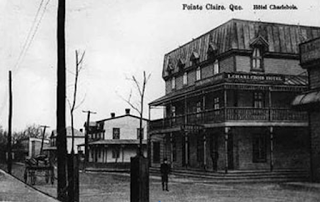

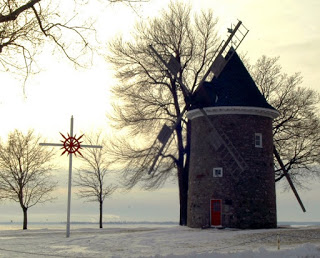
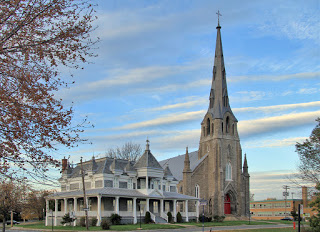
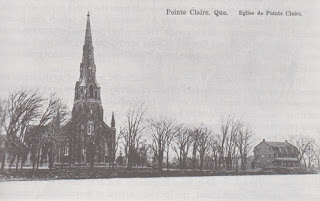
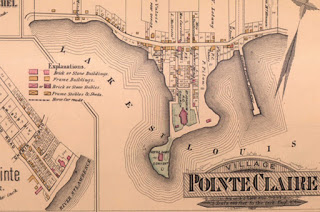

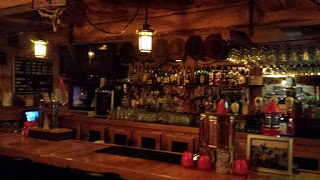


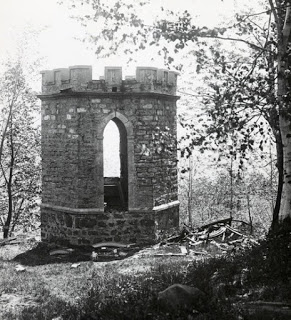

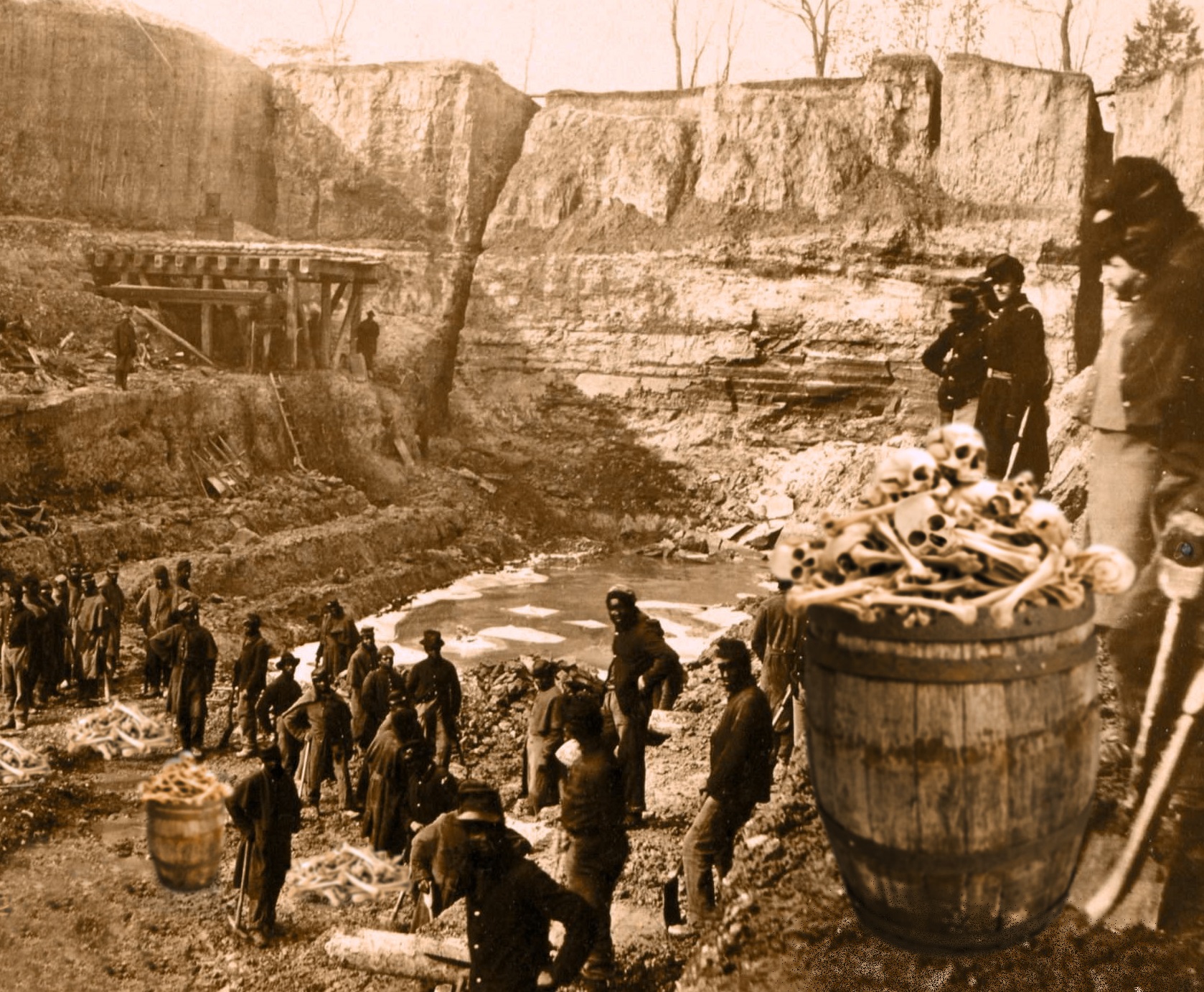

[…] building was sold to condo developers who wish to demolish it. For more details, please see Haunted Montreal Blog #8. (286 Rue Lakeshore, Pointe […]